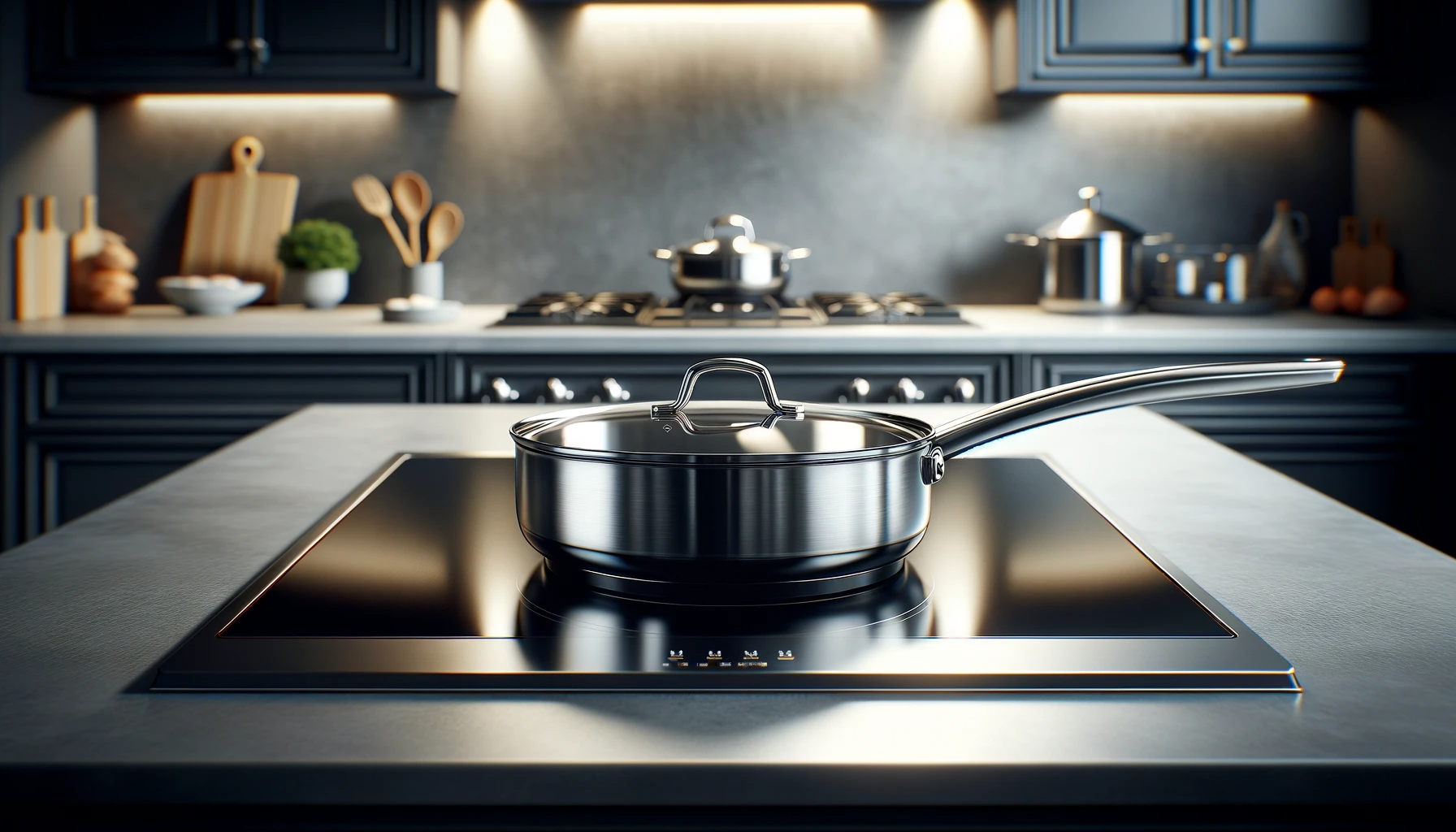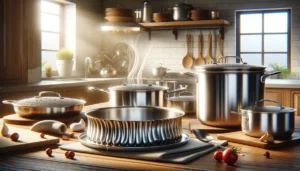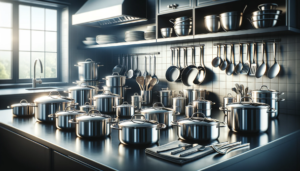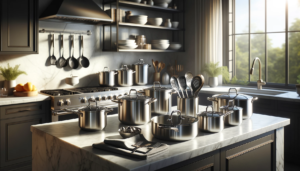Does even cooking spray fail to prevent your egg white omelets from welding themselves to the bottom of your All-Clad stainless steel skillet?
With proper seasoning, cooking methods, utensil selection and storage habits, All-Clad pans can deliver easy release performance rivaling nonstick coatings.
Let’s dive in to see how foolproof nonstick cooking is achievable by caring correctly for your All-Clad stainless steel cookware
How Do I Keep Food From Sticking To My All-Clad Skillet?

Using quality cookware like All-Clad can prevent many of the sticking issues that occur with inferior pans.
However, even the best stainless steel skillets require proper seasoning and cooking techniques to unlock their full nonstick potential over time.
Following a few simple guidelines for properly preparing, caring for and using your All-Clad cookware will help keep foods from adhering excessively during the cooking process.
Properly Season Your Pan
Properly seasoning an All-Clad skillet before first use is important for achieving nonstick performance over time.
To season an All-Clad skillet, wash it by hand using hot water and a small amount of mild dish soap in order to remove any residue from the manufacturing process.
Rinse the skillet thoroughly afterwards and dry it completely using a soft towel or heat on the stove briefly to evaporate any remaining moisture.
Once the skillet is clean and dry, apply a thin layer of cooking oil able to withstand high heat such as vegetable, grapeseed or peanut to the entire interior cooking surface and exterior if desired to maintain the shiny appearance of stainless steel over time.
Use a soft cloth or paper towel to massage the oil into the skillet, ensuring it forms an even coating over the entire surface of the pan.
Heat the oiled skillet on the stovetop over medium heat for about 10 minutes, then raise the heat to high for another minute or so.
This process polymerizes the oil to the surface of the pan, creating that initial nonstick layer.
Carefully wipe out the excess oil from the pan using paper towels then repeat the oiling and heating process two to three more times to further boost the skillet’s nonstick abilities over time.
Re-season older All-Clad pans using this method every six months or so.
Use the Right Cooking Techniques
Following the proper cooking techniques when using your All-Clad skillets can also help prevent food from sticking over time.
Be sure your pan is fully preheated before adding any ingredients.
Cold oil and food placed into a cold skillet is a recipe for sticking.
Electric stovetops may require 5 to 10 minutes of preheating an All-Clad skillet at medium or medium-high heat while gas stoves preheat in two to three minutes.
Test oil temperature before adding food by adding a drop of water – it should sizzle upon contact with the surface of the sufficiently heated pan.
Use oil or butter each time you cook for its lubricating properties.
For quicker cooking items like eggs, vegetables or delicate proteins like seafood, a teaspoon or two is sufficient.
Fattier meats like bacon or chicken thighs may only require rendering of their own fat to prevent sticking but adding oil assures this foolproof nonstick method.
Over time, the seasoned polymer layer of an All-Clad skillet allows less and less additional oil for nonstick cooking.
Crowding may lead to excessive moisture release from ingredients, boiling rather than evenly searing the exterior of each piece.
Allow plenty of room when cooking meat so a nice brown crust forms rather than steaming in released juices.
Work in batches when cooking items like chicken pieces, shrimp or even onions so that they brown properly.
As long as the pan is sufficiently hot and lubricated, foods should release nicely when properly cooked without overloading the pan.
Choose Suitable Utensils

Using appropriate utensils when cooking with All-Clad stainless steel skillets also prevents damaging scratches leading to permanent erosion of their protective seasoning over time.
Instead of harmful metal spatulas or forks, opt for wood, plastic or silicone varieties that safely glide over the pan’s coating while preserving it flawlessly meal after meal.
The soft flexibility of silicone or gentle scraping capabilities of wood over stainless steel maintains nonstick perfection without abrasion.
A paring knife may also safely release stuck bits of foods when necessary after cooking is complete.
While the tempting abrasive power of steel wool or an SOS pad may erase stuck-on messes in a flash after cooking in an All-Clad skillet, they also permanently damage the seasoning layer exposing the stainless steel below leading to progressively more and more surface adhering by foods.
These abrasive pads also leave micro scratches on the surface detectable in the right light that further promote sticking.
Instead, soft sponges, nylon web scrubbers or plastic scrubbing mesh gently release any residue without harming the seasoning layer.
For the toughest deposits that remain after soaking or deglazing, Lodge makes fantastic polycarbonate scrapers with replaceable blades to erase any signs of cooking while maintaining the nonstick abilities of All-Clad pans when properly cared for over time.
Clean Properly After Cooking
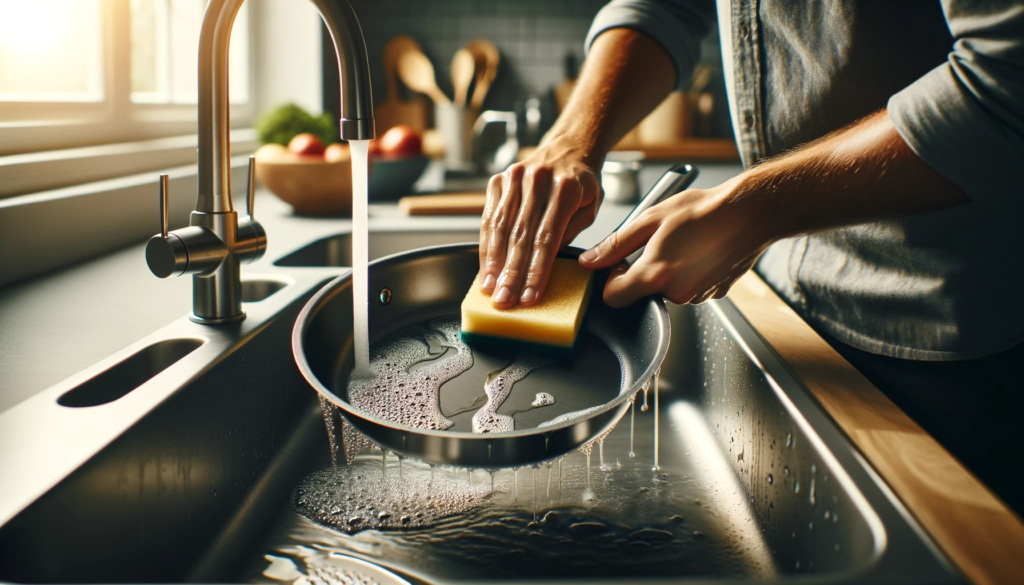
All-Clad pans should be cleaned promptly after cooking, while still warm but not scalding hot to the touch.
Food residues left to dry and bake onto the surface of an All-Clad skillet leads to stubborn sticking, burning and crusty buildup once underway.
A simple hot water rinse of the pan after cooking followed by a good scrub while still warm keeps the vast majority of mess and maintenance at bay.
If leftovers harden before cleanup is possible, fill the skillet with water and bring it to a simmer to loosen and dissolve most deposits on the base and sides of the pan.
Bandage or painters scrapers may also safely remove any chunks still adhering to the surface after soaking without harming the protective coating, while abrasive scrubbing of these areas slowly erodes performance over time.
For dishes with stubborn fond development in the pan like pot roasts or braises, deglazing the pan offers an easy route to nonstick restoration after cooking.
Adding a bit of flavorful wine, stock or vinegar to the hot pan after moving cooked foods to serving dishes allows the solution to bubble away dissolving much of the residue in minutes before scrubbing.
Boiling the stuck remnants rehydrates them for effortless release with minimal elbow grease during cleanup.
Steel wool or abrasive cleaners are never needed for routine maintenance of All-Clad skillets when promptly addressing cooking messes before they intensify into a major restoration project.
When washing All-Clad skillets by hand after cooking, warm soapy water and soft sponges or brushes make quick work of rinsing away oil or grease residue from meal preparation.
Avoid ice cold running water as rapid temperature changes can gradually distort pan bases leading to less than even heating.
Also skip the dishwasher’s harsh cycles and abrasive jets of water that degrade seasoning over time and opt for gentle, prompt hand washing instead.
Store cookware properly once clean and dry to maintain their performance.
With conscientious usage plus non-abrasive cleaning regimens after mealtime, All-Clad skillets deliver flawless nonstick cooking surface after surface.
Store Carefully Between Uses

Allowing All-Clad skillets to cool fully before storing is important to prevent moisture accumulation leading to corrosion issues over time.
As the warm pan cools down, condensation from the air may form troublesome water droplets if stacked away too quickly.
Let pans air dry for 10 to 15 minutes after hand washing before stacking or cupboard storage.
Pans still slightly warm may also be placed back on a burner at low heat for a few minutes to evaporate any remaining moisture completely after scrubbing.
Taking this extra time prevents water spots or oxidation from developing that degrade cooking performance.
Besides wiping skillets dry to actively prevent wet storage, proper cookware storage habits promote longevity.
Nesting pans directly inside one another seals in residual moisture against pan surfaces encouraging corrosion plus stuck-on food residues or abrasion damage between pieces.
Instead, separate stacked pans with parchment rounds, cloth liners or insert buffering air space to forestall moisture retention issues.
Hanging pans separately on storage racks also avoids damaging contact allowing air to circulate freely around each piece.
Cookware hung closest to heat sources like stoves or dishwashers tend to maintain more residual warmth promoting moisture evaporation after washing.
With just occasional usage, an All-Clad skillet may also be safely stored with its bottom surface facing up rather than down.
The basin shape naturally collects ambient water droplets over time when not in regular rotation.
Storing inverted takes advantage of gravity to prevent small moisture accumulations which breed trouble.
However, pans used more regularly see less opportunity for condensation to develop before the next usage making inversion benefits negligible.
No matter a pan’s frequency of use, proper drying plus storage habits greatly extend All-Clad nonstick capabilities and longevity for years of exceptional cooking experiences ahead.
Conclusion
Properly seasoning, using suitable cooking techniques, utensils and cleaning methods, plus careful storage keeps food from sticking to All-Clad skillets over time.
With this simple, non-abrasive care, the nonstick performance and longevity of these exceptional pans is easy to maintain meal after meal.
